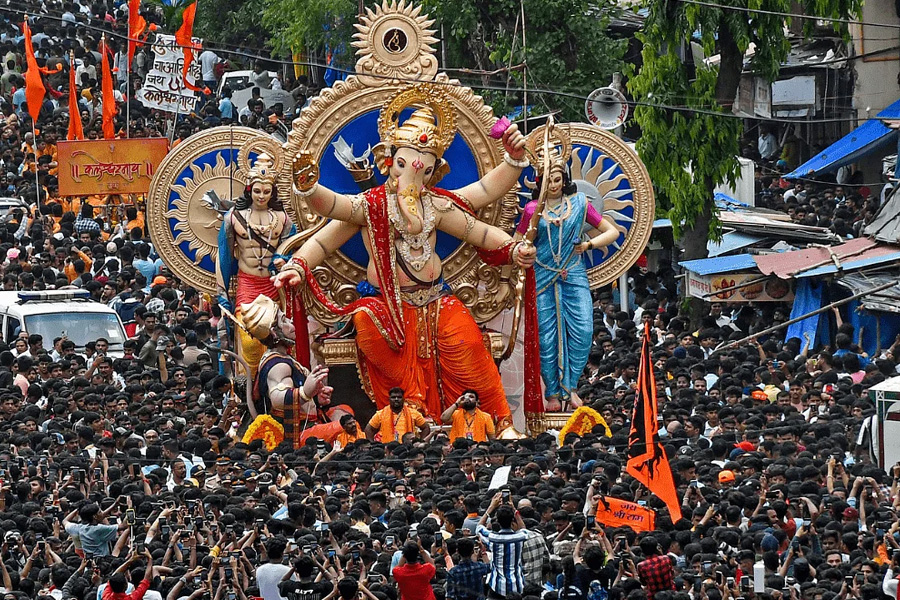
This chapter considers the extent to which, while preparing for and celebrating religious festivals, relatively rigid ethno-religious categories disassemble and reconfigure themselves according to the specifics of positionality, locality, and temporality.
Authors
Raminder Kaur, University of Sussex, United Kingdom.
Syed Mohammed Faisal, Assistant Professor, Jindal School of Banking and Finance, O.P. Jindal Global University, Sonipat, Haryana, India.
Summary
This chapter considers the extent to which, while preparing for and celebrating religious festivals, relatively rigid ethno-religious categories disassemble and reconfigure themselves according to the specifics of positionality, locality, and temporality. The focus is on people who, among their composite configurations, self-identify as Muslim in two contrasting localities where the festival dedicated to the Hindu deity, Ganesh, is celebrated in Mumbai.
The argument goes beyond the polarities of Hindu–Muslim communalism and communal harmony to consider the ambivalence or ‘deep interconnections’ that (non-)involvement in the Ganesh festival might raise. By drawing on ethnographic fieldwork, arguments are reassessed about, on the one hand, narrow communally drawn lines, and on the other, an uncritical expression of syncretic celebrations.
The focus is on Hindu–Muslim interrelations, but the chapter also goes beyond the ideological understandings of these terms as evident in Hindutva politics and processes of Islamicization in India, for such phenomena have only tangential bearings on the proximal lives of diverse communities in the city.
People may not foreground ‘Hindu’ or ‘Muslim’ in their self-identifications, but deploy other categories that allude to an intersection of caste, region, or sect among other identifiers. Discourses of dis/engagement with the festival therefore reveal a spectrum of us–them relations.
Published in: Michael Stausberg (ed.), Religions, Mumbai Style: Events-Media-Spaces (Oxford, 2023; online edn, Oxford Academic, 22 June 2023)
To read the full chapter, please click here.

